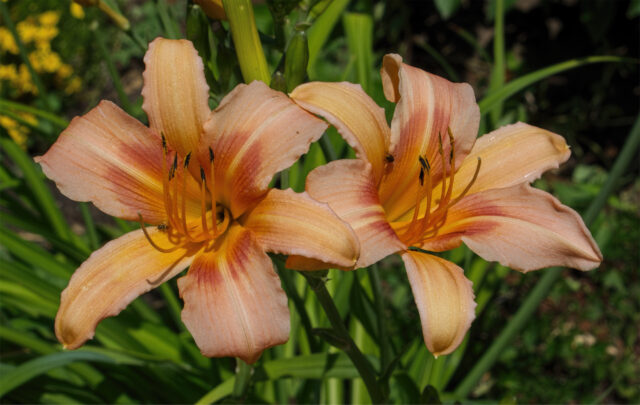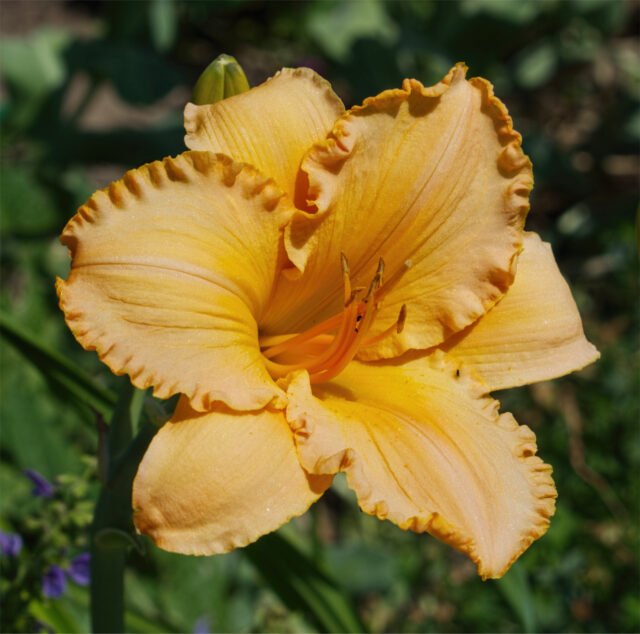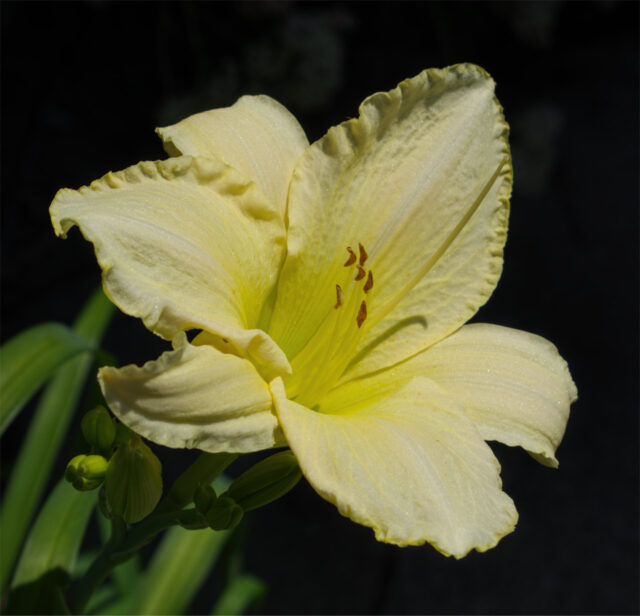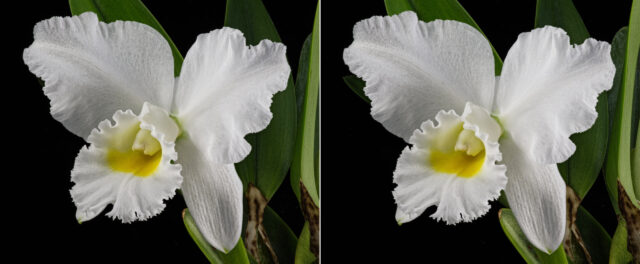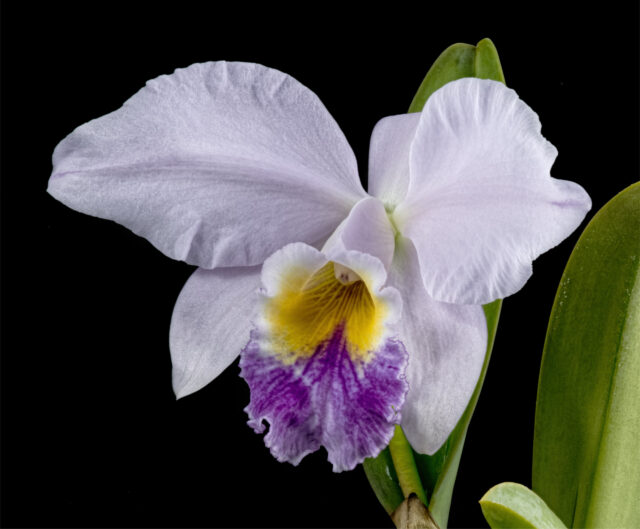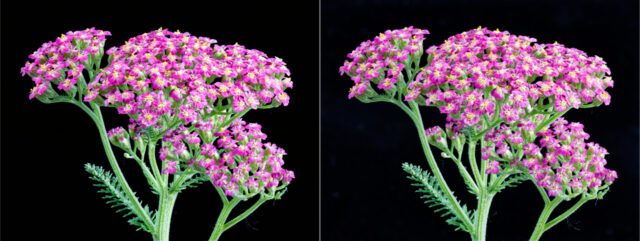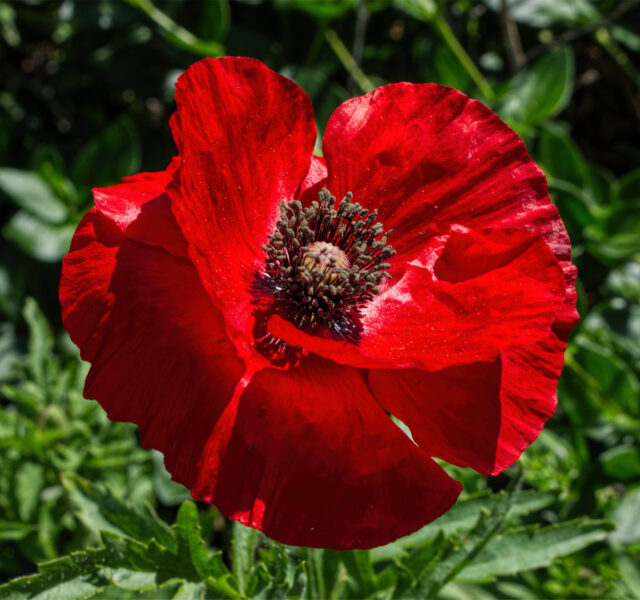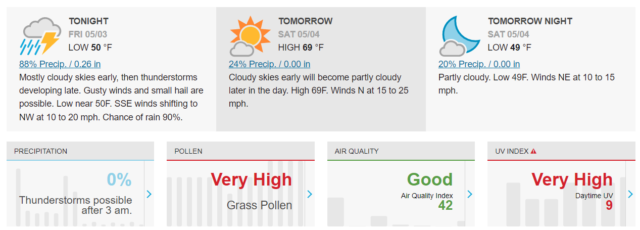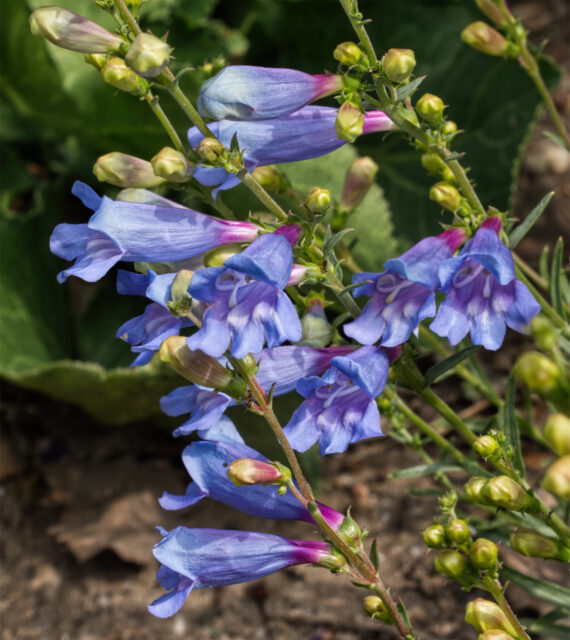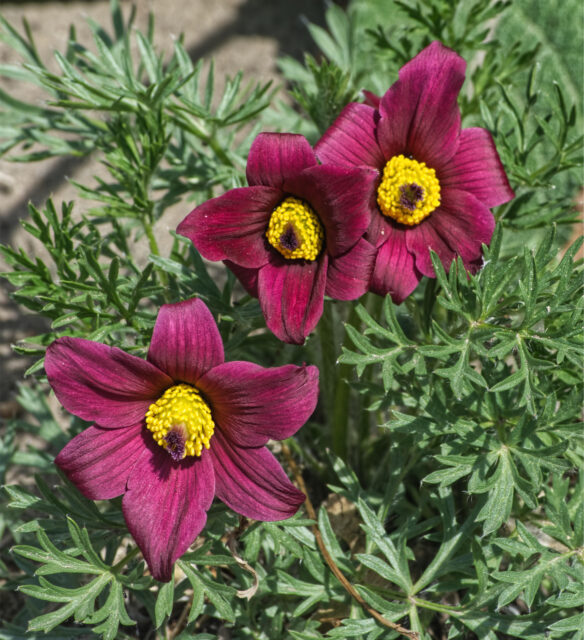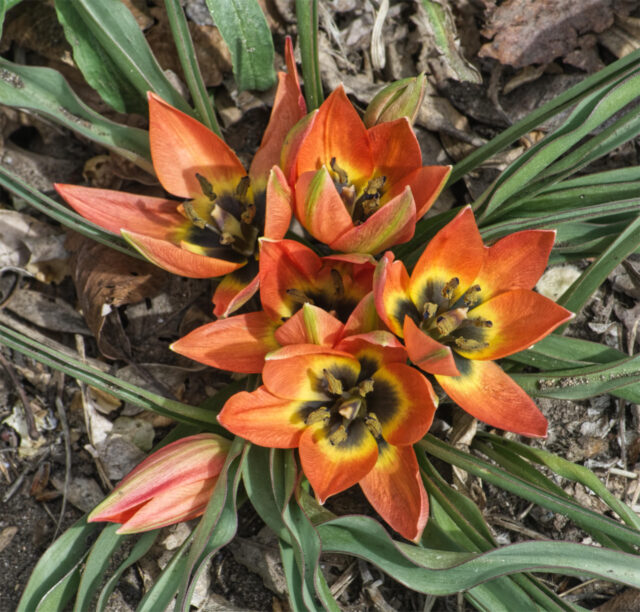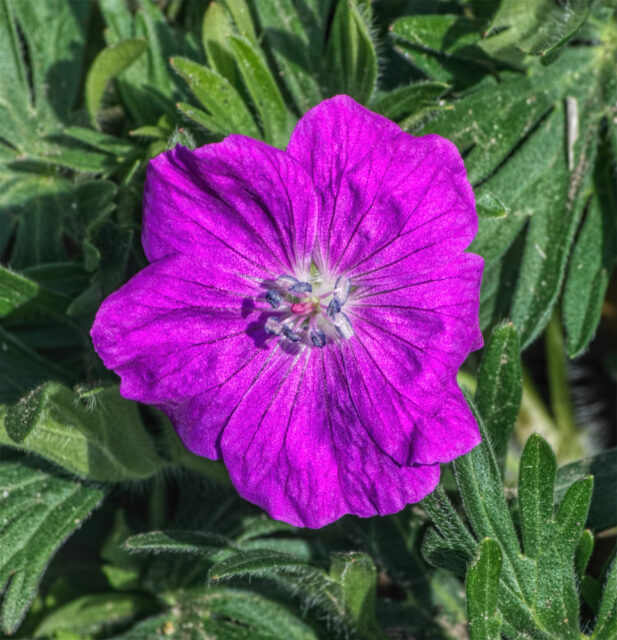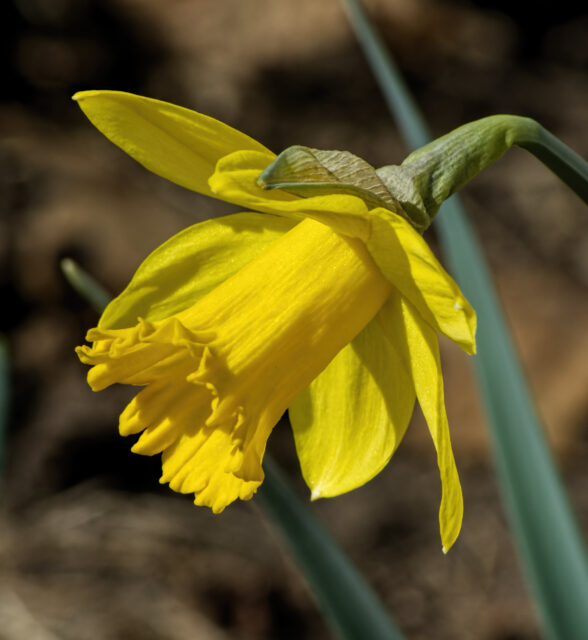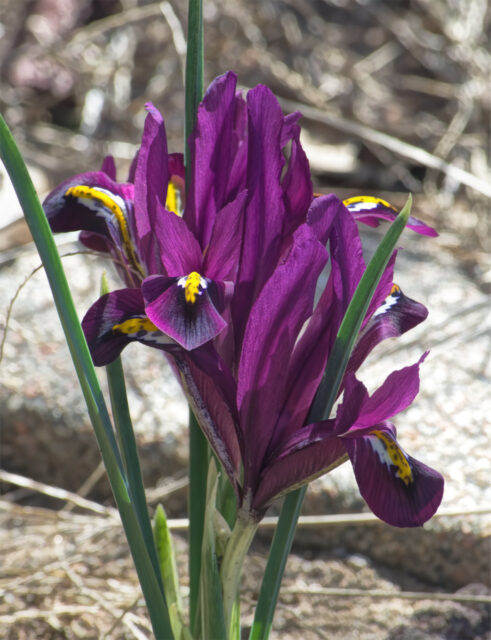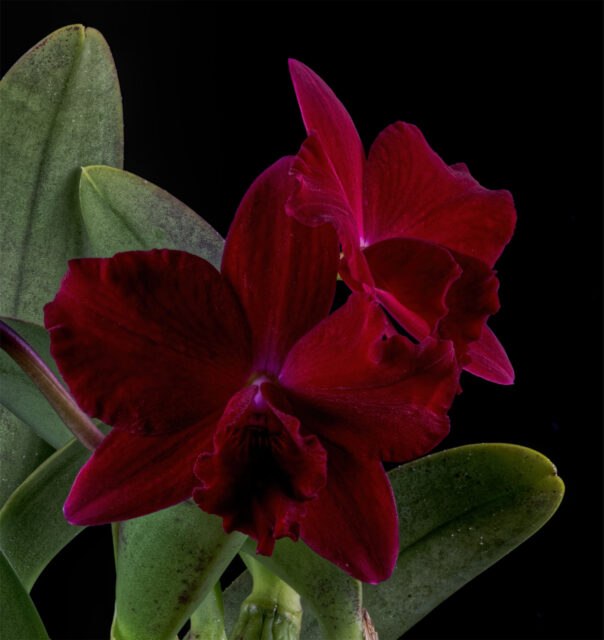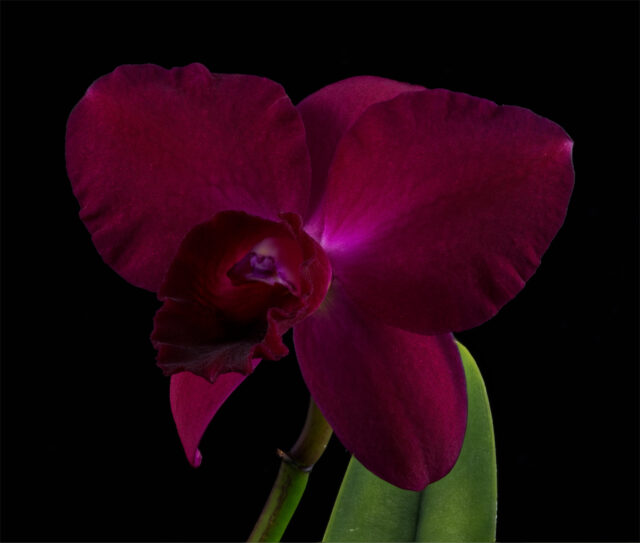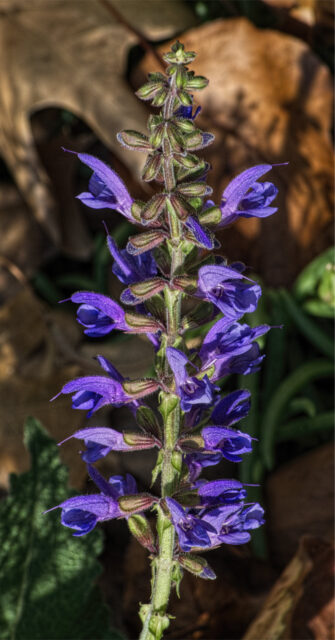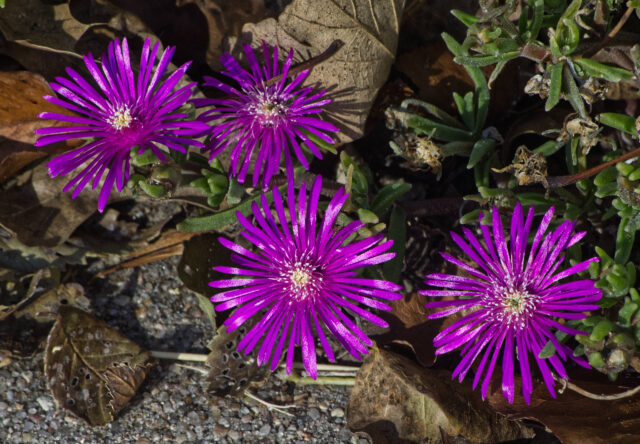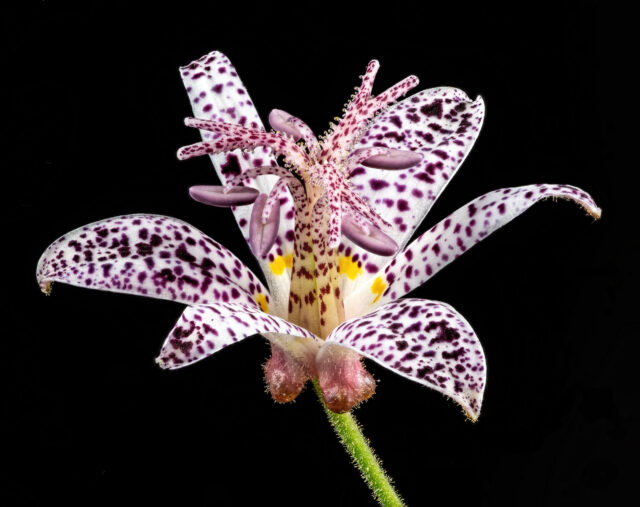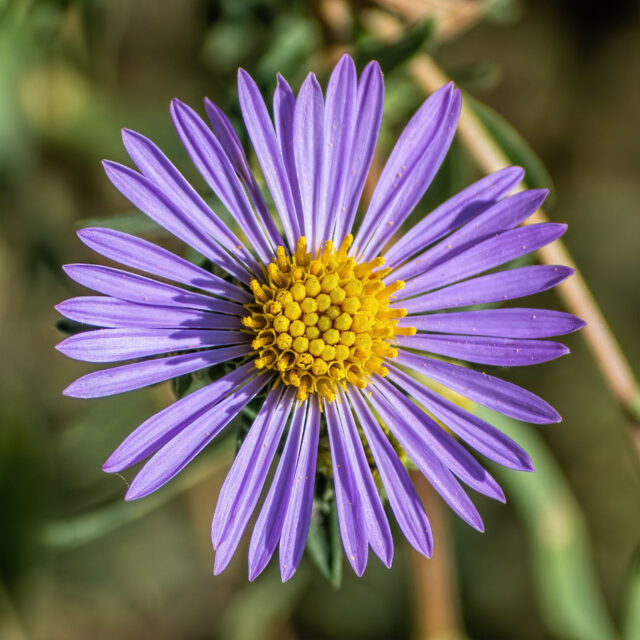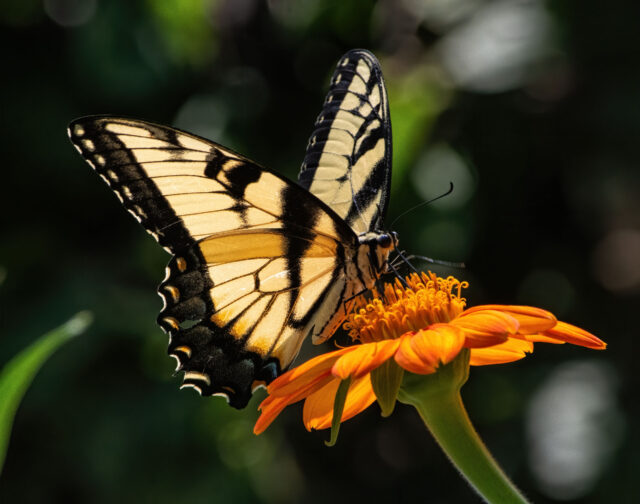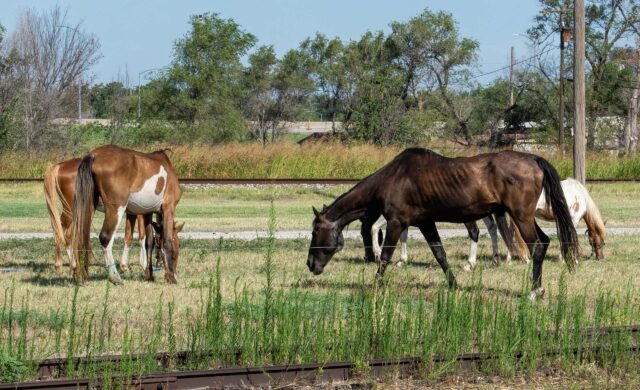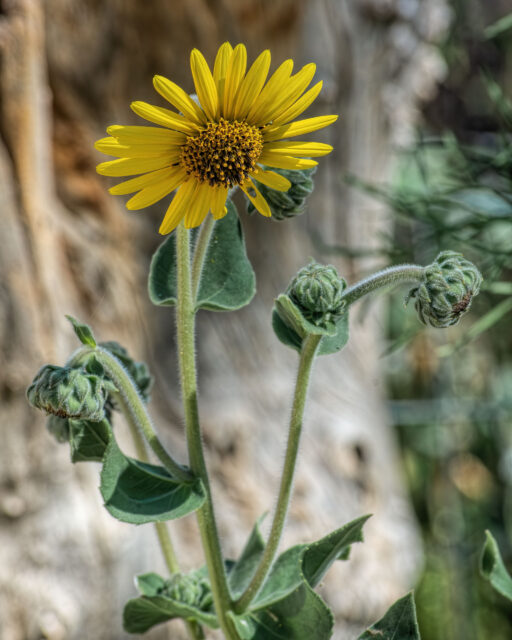Horticulturalists see colors differently than most people. I’ve mentioned before that “coerulea” forms of orchids look lavender to me, not blue. Something similar happens with daylilies. This is “Hall’s Pink.”
Does that look pink to you? Parts of it may look a bit pinkish, but overall I’d call it orange.
“Artist Etching” is generally described as “pink.” Judge for yourself.
Meanwhile, “Snowy Apparition” is called “near white.”
Not very “near” to my eyes. I’ve seen pictures online in which it does look very pale, but the plant in my garden is definitely yellow.
It’s possible that in a different garden with different conditions, or photographed at different times of the day under different lighting, the colors may be truer to their descriptions, but calling these “pink” and “white” is wishful thinking. Still, even though the colors are not as advertised, they’re reliable plants that bloom well.

